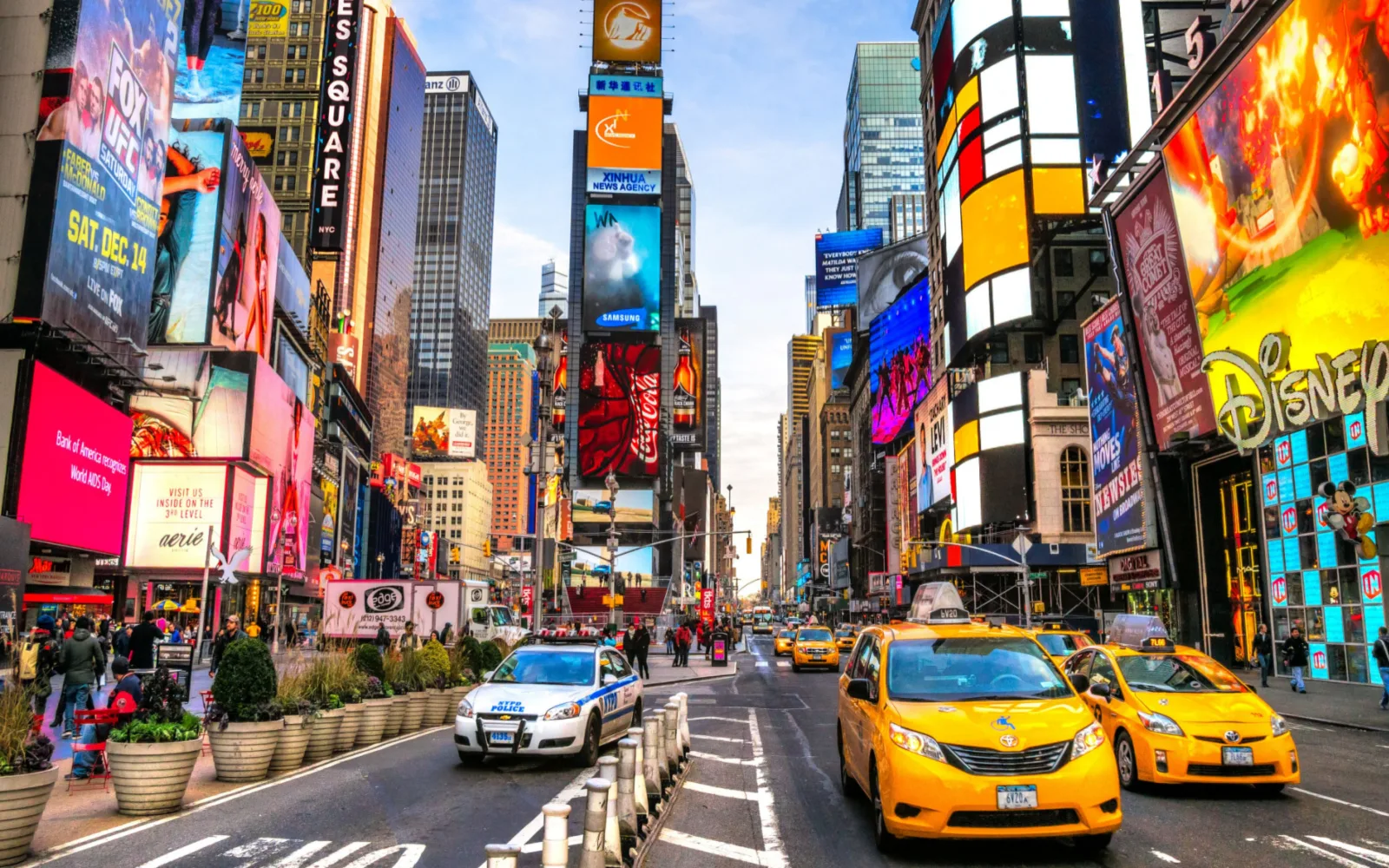Is New York City safe to visit in 2025?
New York City, or “The Big Apple,” is one of the world’s most popular tourist destinations. Every year, it hosts a whopping 66 million visitors — multiple times the massive city’s population.
New York City has many famous landmarks, from the Empire State Building to the Statue of Liberty to the oasis of Central Park. It has some of the world’s most famous museums, such as the Metropolitan Museum of Art.
Visitors can shop at high-end department stores such as Bergdorf Goodman’s or thrift shops and enjoy cuisine from all over the world.
Around Christmas, New York City is truly magical, thanks to the Radio City Christmas Spectacular, holiday displays on 5th Avenue, and so much more. While there are countless reasons to visit, is New York City safe to visit? Here’s our take.
Is New York City Safe to Visit?
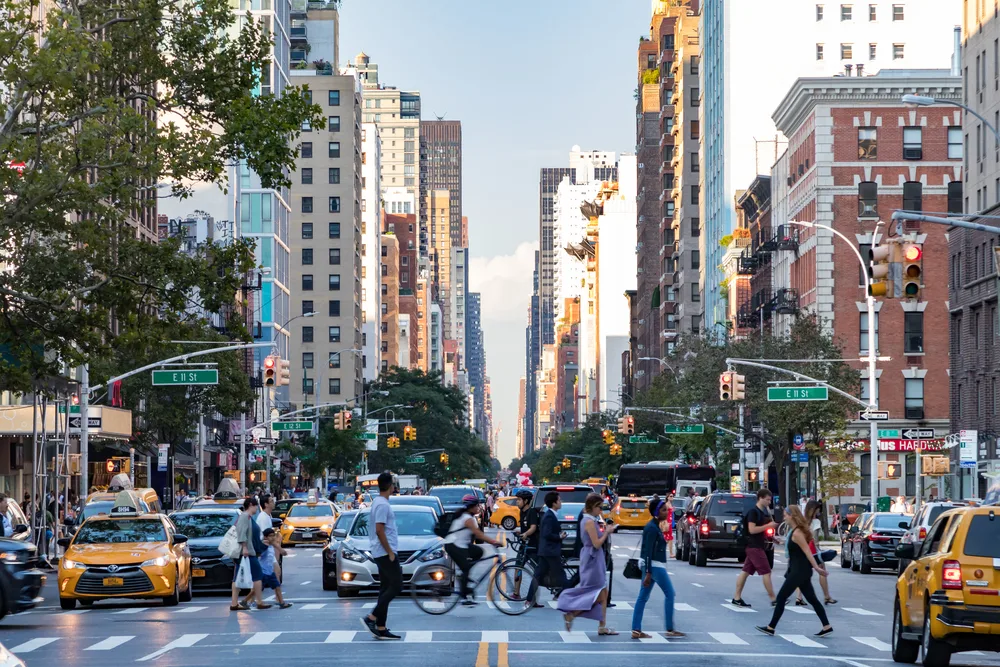
NEW YORK CITY – CIRCA 2017: Busy crowds of people walk across 3rd Avenue in front of rush hour traffic in the East Village neighborhood of Manhattan in New York City/Ryan DeBerardinis/Shutterstock
Yes. New York City is safe to visit, and the stereotypes of it being a dangerous place are untrue. New York City is actually one of the safest big cities in the United States.
Yes, it’s true that problems such as crime happen (it would be impossible for these problems to be completely eliminated in a city of 8 million people), but tourists can easily avoid them with some common sense and by avoiding more dangerous parts of the massive city.
The city may be big and gritty, but it isn’t unsafe. In fact, it was ranked the 12th safest city in the world for tourists by the Economist’s 2021 Safe Cities Index!
According to the official ESTA Form site (the site that visa-free travelers must fill out before entering the United States), New York City is one of the safest big cities in the United States for tourists. It is safer than Chicago, Detroit, and Las Vegas.
Ready to Book?
Unlock Exclusive Discounts on Expedia.com!
Got Travel Insurance?
Protect yourself for unexpected interruptions.
Compare Plans We may be compensated when you book after clicking on one of our links.However, New York City does still experience crime and other problems, such as:
- Petty theft
- Tourist scams
- Mugging
- Assault
- Terrorism
- Natural disasters
However, since the city is so big, it is unlikely that these incidents will affect you even though they happen statistically every day. Many people think that New York City is unsafe thanks to its old reputation as a dangerous place.
In the 1970s and the 1980s, the city was suffering from serious neglect, and it genuinely was unsafe for residents and visitors alike. However, the city experienced a very steep drop in crime in the 1990s, and since then, it has become a fairly safe city to visit.
Other people are concerned about terrorism when visiting. NYC was the victim of several high-profile terrorist attacks in the past, most notably the 9/11 attack on the World Trade Center that killed thousands of people.
It’s an attractive target for terrorists because it is a large city and the center of global finance. However, city authorities say that there is a low to moderate risk of terrorism in the city now.
Since 9/11 and smaller attempts, the city and national authorities have stepped up counter-terrorism efforts. As you walk around town, you’ll probably notice heavily armed police officers patrolling the subway or popular tourist destinations.
One concern that tourists rarely think about but will affect your time in New York City is the weather. The weather in NYC is deceptively extreme. Winters are bitterly cold, and summers are very hot and humid.
In August and September, the city can get hit with tropical storms or weaker hurricanes as they make their way north from the Gulf Coast. In 2021, over 40 people died due to Hurricane Ida.
Before visiting New York City, check the weather forecast for the time during your visit on a reliable site such as the National Weather Service. If there is an extreme weather event predicted, the city sends out emergency alerts to the phones of people in town.
Crime in New York City
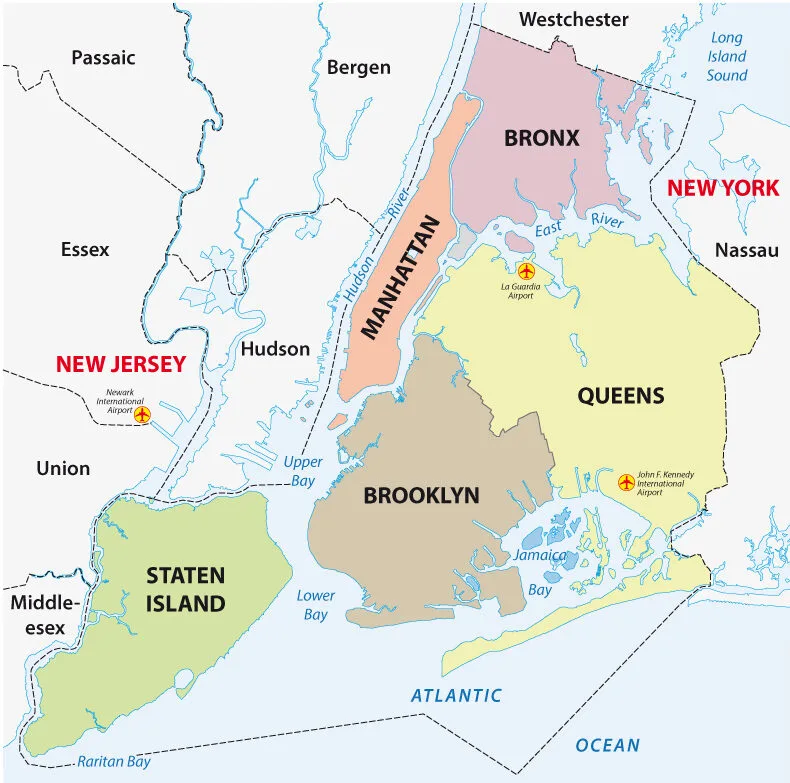
Rainer Lesniewski/Shutterstock
In order to fully understand that safety issue, you first have to know that the city consists of 5 boroughs, including:
- Brooklyn
- The Bronx
- Queens
- Manhattan
- Staten Island
With this in mind, most of these areas are considered safe, especially for tourists since you’ll spend most of your time in the highly-populated areas. But, like any other city, New York City still has its problems.
It is true that the city has regular crime, like all big cities. However, a look at the crime statistics can help put the situation more in perspective.
Crime in the city has been steadily declining since the 1990s and over the past few years (countering popular news stories that paint the city as a crime-ridden area). According to official NYPD data, shootings in September 2023 were down by 34.2% compared to the previous year.
Overall, index crimes declined by 5.6%. The only major crimes that increased were assault and automobile theft, but automobile theft is unlikely to affect visitors since they don’t need cars to get around the city.
According to FBI crime data, violent crime makes up 28% of the total crimes committed in New York City, while property crime makes up 72% of the total crimes committed.
The most common violent crime is assault, which makes up 65.5% of total violent crimes committed, followed by robbery, which makes up 28% of total violent crimes committed.
Most incidents of assault occur between people who know each other or have some type of relationship, so visitors are at relatively low risk of this crime. The violent crime that is most likely to affect visitors is robbery.
The most common property crime is theft, which makes up 62.8% of the total crimes committed in New York City. This is also the crime that is most likely to affect visitors to New York City, as it is one of the only crimes for which tourists are directly targeted.
The theft rate in New York City is 1,247 incidents per 100,000 people.
Plenty of crime happens in New York City, but remember that the rate divided by nearly 9 million people is not that high. Tourists are less likely to be affected by crime since areas popular with tourists tend to have lower crime rates.
Petty Theft
The crime that is most likely to affect visitors to New York City is petty theft. Common forms of petty theft include pickpocketing, bag snatching, and scams. The New York Times has some advice for visitors to NYC on how to hold onto their valuables.
Try to blend in by not flaunting your valuables and expensive jewelry. The valuables you do have to carry with you, such as your phone and wallet, should be in a safe place, such as a front pocket or cross-body bag. Never, ever leave your bags or any valuables unattended.
Pickpockets and bag snatchers tend to operate in crowded areas, so make sure you hold on tighter to your bag in a crowded place such as Times Square. Beware of entrances to subway stations, trains, and bus doors.
Pickpockets sometimes cause a distraction here, forcing people to squeeze past them and then taking their valuables. Nowadays, many thieves in New York City rely on scams to part their victims from their money.
Some scams, such as street card games, shell games, and aggressive panhandling, are universal. Use your common sense. If something is too good to be true, it probably isn’t true.
Plus, if someone seems too excited to approach you in the street, they stand out in a city where people prefer to be left alone and probably have bad intentions. Other scams are unique to New York City.
In Times Square, beware of the costumed characters or “naked cowgirls,” street performers who pose for photos in their underwear. If you pose for a photo, it is expected that you tip — and they will be aggressive about demanding payment.
You should also be careful of people offering you “free” rap CDs on the street, as they will demand payment once you take them. Don’t buy tickets to popular shows and events on the street, as they are often fake.
Robbery
The only violent crime that tends to target tourists is robbery. Robberies and muggings are not as common in New York City but still may happen. Most robbery incidents happen at night.
New York City is safe to walk around at night, but make sure that you stick to well-trafficked, well-lit areas with plenty of other foot traffic. After dark is not the best time to go exploring a new neighborhood or wandering down a dark alleyway.
If you are taking the subway at night, wait for the train on the side of the platform near the station master and try to take the train car with the conductor in it. Subways in New York City are fairly well-trafficked until well after midnight (this is the city that never sleeps, after all), so try to be near other people.
If someone does try to rob you, hand over your valuables without trying to fight back. Muggers are often armed, and there have been cases of robberies escalating to assault.
Avoiding Bad Areas
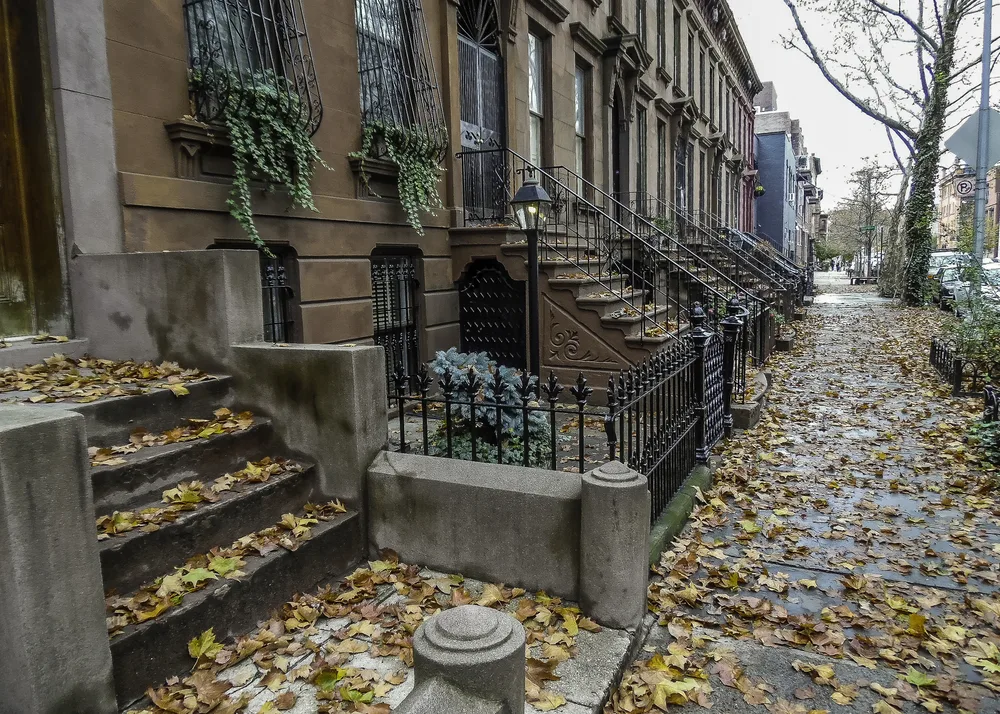
LouThePhotographer/Shutterstock
There is sometimes a stark difference between crime rates in different neighborhoods in New York City. Certain areas of the city have a very high crime rate. These areas include:
- East New York (Brooklyn)
- Brownsville (Brooklyn)
- Bedford-Stuyvesant (Brooklyn)
- East Harlem (Manhattan)
- Mott Haven (The Bronx)
- South Bronx
Most of these places are far away from anywhere a tourist would want to venture, so it is unlikely that you will wind up there.
The exception is Central Park. Although Central Park is a popular place to visit during the day, it is quite unsafe after dark, and many hapless tourists have been robbed there.
Things to Consider
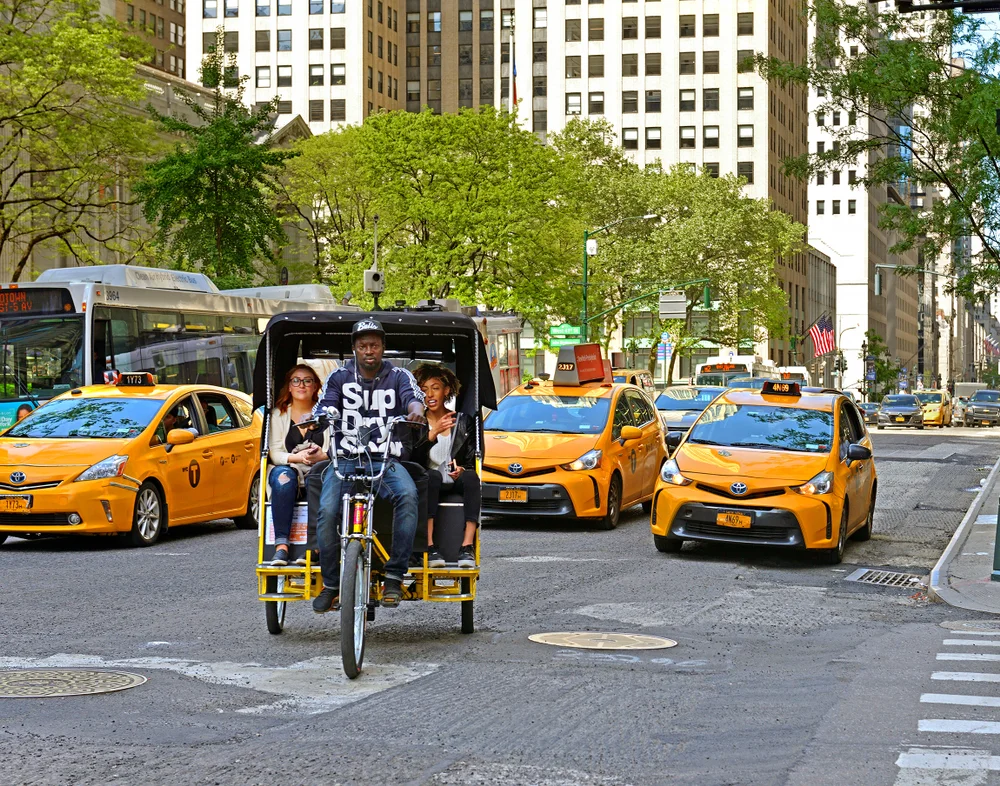
NEW YORK, USA – MAY 9, 2019: Cycle Rickshaw in New York City/Popova Valeriya/Shutterstock
Here are a few additional tips to keep you safe in New York City:
- Only take authorized yellow or green cabs or ride-sharing apps. Unauthorized cabs and pedicabs/rickshaws often overcharge tourists.
- Avoid street ATMs, as they often have card skimmers. Use official bank ATMs instead.
- You will encounter people who are homeless or experiencing mental illness. If someone is acting strange in public, just ignore them or move away. They are usually harmless, just experiencing distress.
- Obey local norms. Don’t stop in the middle of the sidewalk. On escalators and stairs, stick to the right so people can pass you. Try to walk with purpose. Otherwise, you may get dirty looks and choice words from locals in a hurry.
Frequently Asked Questions
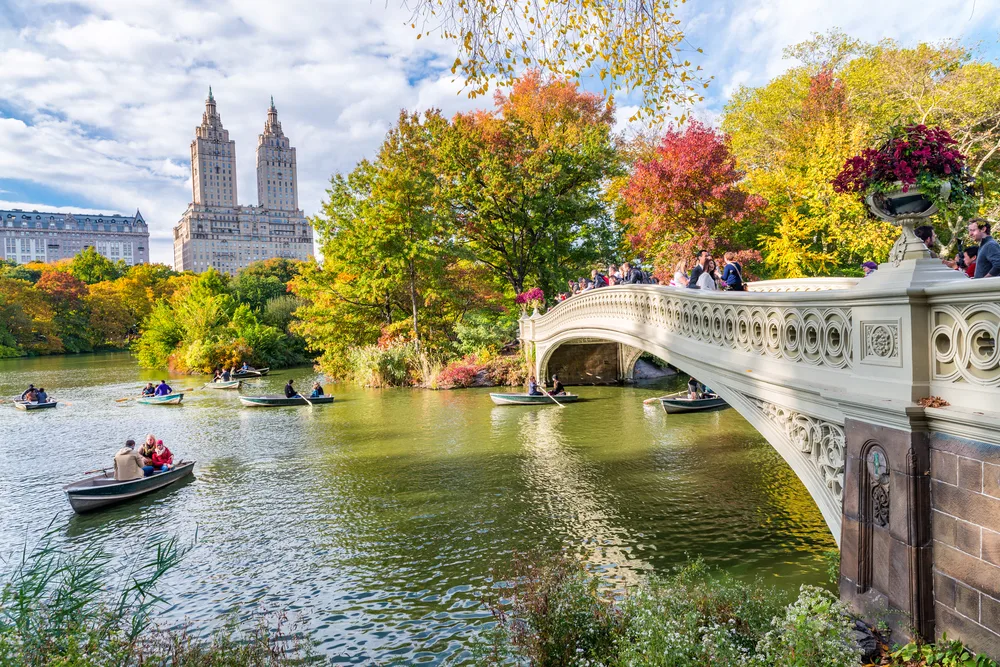
GagliardiPhotography/Shutterstock
Here are some common questions people ask before visiting New York City:
Is New York City safe to visit right now?
Yes, New York City is safe to visit right now. The crime rate is declining, and news reports about the city’s danger are exaggerated.
What should I be careful of when visiting New York City?
Be careful of someone walking away with your valuables. Try not to attract unwanted attention, and put your wallet in a secure place.
Is New York safer than London?
London is slightly safer than New York City. It has a lower violent crime rate, making it safer overall. Like NYC, London has pockets that are more dangerous.
What is the safest area to stay in New York City?
The safest areas in New York City to stay overnight are well-trafficked, upscale areas in Manhattan. Popular neighborhoods include Chelsea and Tribeca or the calmer Murray Hill.
Is the NYC Subway safe at night?
The NYC subway is less safe after dark. However, it is possible to take it safely if you avoid seeming distracted, such as sleeping or using headphones, and stick to stations and lines that see a lot of foot traffic.
So, Is New York City Safe to Visit?
New York City is one of the safest big cities in the United States. Although crime does happen, it has a moderate crime rate per inhabitant. Most violent incidents don’t affect tourists at all.
While you should still take common sense precautions, such as avoiding neighborhoods with a dangerous reputation or keeping your wallet secure, it is possible to visit New York City safely. Happy travels!



